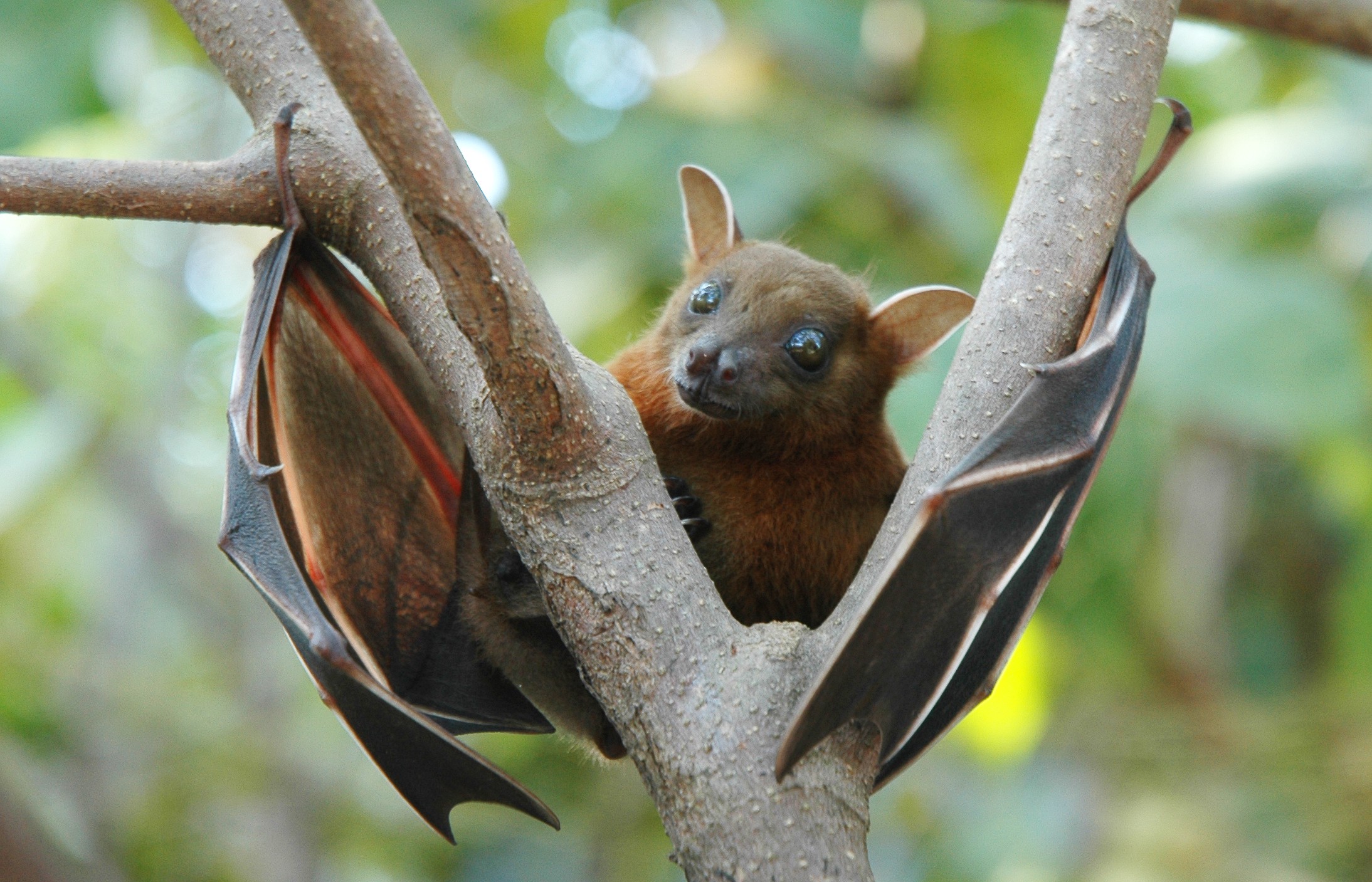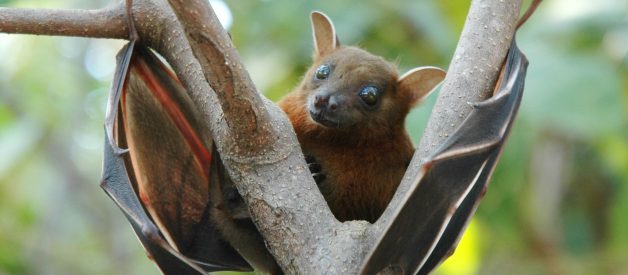This amusing video shares a few facts about the amazing megabats ? the largest flying mammals alive in the world today
by GrrlScientist for The Guardian | @GrrlScientist
 Lesser short-nosed fruit bat (Cynopterus brachyotis), photographed in Batticaloa, Sri Lanka in daylight while it was moving branch to branch. (Credit: Anton 17/CC BY-SA 4.0.)
Lesser short-nosed fruit bat (Cynopterus brachyotis), photographed in Batticaloa, Sri Lanka in daylight while it was moving branch to branch. (Credit: Anton 17/CC BY-SA 4.0.)
Once again, it?s ?Caturday?, so let?s watch some animals doing stuff!
Today?s animals are megachiropterans, or ?big winged? bats ? more commonly known as megabats or fruit bats. Unlike the bats that pop into most people?s minds when they hear that word, the megabats are frugivorous (fruit-eaters) or nectarivorous (nectar-eaters) mammals that don?t use echolocation to find their food sources. Most species of megabats locate their meals by sight, so they have large eyes and keen eyesight. They are important pollinators or seed dispersers, especially on remote oceanic islands. At least some megabat species are migratory. True to their name, ?megabat?, this group includes the largest flying mammals alive today, with wingspans of 1.5 metres (5 feet).
There are more than 900 species of bats on Earth, which makes the Chiropterans more species-rich than any other mammalian group, except rodents. They inhabit nearly every habitat available, except for the polar extremes. Tragically, due to habitat destruction and other forms of human exploitation, particularly hunting, most megabats are in danger of extinction. (On the other hand, microbats have their own set of partially overlapping problems that are threatening their existence.)
While taking university zoology courses, I learned about the controversy surrounding the two taxonomic groups of bats, that claimed the megabats and the microbats (microchiropterans) might be distinct, with the megachiropterans being more closely allied in deep time with primates than with microchiropterans. This hypothesis was based upon strong similarities in megabat and primate visual systems (ref). But this was a product of convergent evolution where similar ecological and niche demands were addressed using similar evolutionary strategies by primates and megabats. Further, fossil studies (ref) and more recent molecular phylogenetic analyses (ref) have revealed that megabats and microbats really are each other?s closest relatives.
This amusing video shares some information about the megachiropterans, specifically, the flying foxes:
True Facts About the Fruit Bat.
Sources:
Simmons N.B., Jrg Habersetzer & Gregg F. Gunnell (2008). Primitive Early Eocene bat from Wyoming and the evolution of flight and echolocation, Nature, 451 (7180) 818?821 | doi:http://dx.doi.org/10.1038/nature06549 [$]
Pettigrew J.D., S. K. Robson, L. S. Hall, K. I. McAnally & H. M. Cooper (1989). Phylogenetic Relations Between Microbats, Megabats and Primates (Mammalia: Chiroptera and Primates), Philosophical Transactions of the Royal Society B: Biological Sciences, 325 (1229) 489?559 | doi:http://dx.doi.org/10.1098/rstb.1989.0102 [OA]
Eick G.N. (2005). A Nuclear DNA Phylogenetic Perspective on the Evolution of Echolocation and Historical Biogeography of Extant Bats (Chiroptera), Molecular Biology and Evolution, 22 (9) 1869?1886 | doi:http://dx.doi.org/10.1093/molbev/msi180
Enjoy my writing? Please give me a few handclaps to recommend this piece. Follow me on Medium for more like this.
.. .. .. .. .. .. .. .. .. .. .. .. .. .. .. .. .. .. .. .. .. .. .. .. .. .. .. .. .. .. .. .. .. .. .. .. .. .. .. .. .. .. ..
GrrlScientist is very active on twitter @GrrlScientist and you can follow all her writing by subscribing to her TinyLetter
Originally published at The Guardian on 21 June 2014.


